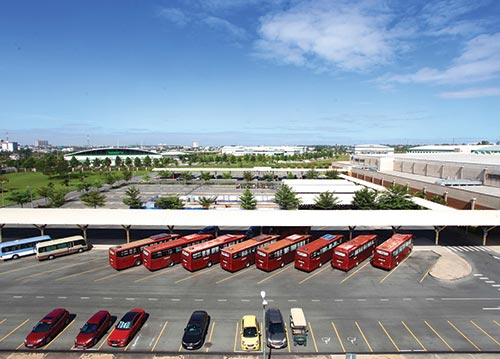New criteria for hi-tech investments

The new criteria and updated list of prioritised technologies should lure fresh investors- Photo: Le Toan
According to the newly approved Law on Investment, businesses wanting to be recognised as hi-tech firms will first have to be involved in the production of the listed hi-tech products and conform to the government’s energy saving and environmental protection standards. In addition, the businesses must follow other criteria regulated by the prime minister.
Prime Minister Nguyen Tan Dung issued a new shortlist of prioritised technologies and hi-tech products following National Assembly approval of the new Law on Investment. The new regulation of criteria and shortlist of high technologies actually include significant changes in luring hi-tech investments from foreign companies to Vietnam, especially multinational companies. While the new Law on Investment replaces all the criteria related to research and development (R&D) expenditure and ratio of workforce working in the R&D activities regulated by the Law on High Technology, the new shortlist also replaces the outdated list issued in 2010.
“The policy changes aim to bolster hi-tech investments in the country, as we see hi-tech multinational companies seeking locations in Asia to set up new investments,” said Do Nhat Hoang, director of the Foreign Investment Agency under the Ministry of Planning and Investment.
This also means that from July 2015, it will be easier for domestic and foreign companies to enjoy preferential incentives granted to hi-tech firms. Hoang believed there would be a new wave of hi-tech investments from foreign companies in Vietnam in the future.
Currently, only a few companies have been recognised as hi-tech firms. Even well-known hi-tech firms like Intel, Samsung, and Nokia have failed to meet the criteria set out in Vietnam’s Law on High Technology. Instead these firms had to be specifically recognised as hi-tech enterprises by the prime minister.
Nguyen Van Dao, deputy director of Samsung Vina Electronics – an affiliate of Samsung Electronics in Vietnam, said the old criteria for enterprises to enjoy hi-tech preferential incentives were “very unreasonable.”
“The changes are reasonable, especially for luring large-scale inward investments in term of hi-tech industries,” said Dao.
According to the Law on High Technology, companies would be recognised as a hi-tech enterprise when it satisfied all criteria, including manufacturing hi-tech products listed by the government, and spend an average 1 per cent of the total annual turnover on R&D activities in Vietnam during the first three years, and over 1 per cent of its total turnover from the fourth year.
For example, if Samsung’s plant in the northern province of Bac Ninh exported $23 billion in value in 2013, the firm would have to spend at least $230 million on R&D activities for the year.
In addition, the number of its workers with university or higher degrees personally involved in R&D activities needed to account for at least 5 per cent of the firm’s total workforce.
What the stars mean:
★ Poor ★ ★ Promising ★★★ Good ★★★★ Very good ★★★★★ Exceptional
Latest News
More News
- Global partnerships key to Vietnam’s IFC development (December 26, 2025 | 16:18)
- Vingroup pulls out of bid to invest in North-South high-speed railway (December 26, 2025 | 11:42)
- Strengthening supply chains through trade promotions and customs reform (December 24, 2025 | 14:00)
- PM orders investment model for North–South high-speed rail (December 22, 2025 | 17:43)
- LS Eco Energy to invest in Vietnam rare earth sector (December 22, 2025 | 17:31)
- Government moves to establish International Financial Centre (December 21, 2025 | 21:00)
- Vietnam's IFC to target global investment flows (December 21, 2025 | 18:00)
- Two national hospitals expand capacity with new facilities (December 20, 2025 | 09:00)
- Ha Tinh breaks ground on major Vingroup industrial and energy projects (December 19, 2025 | 18:24)
- EVN launches major power infrastructure projects nationwide (December 19, 2025 | 18:17)

















 Mobile Version
Mobile Version